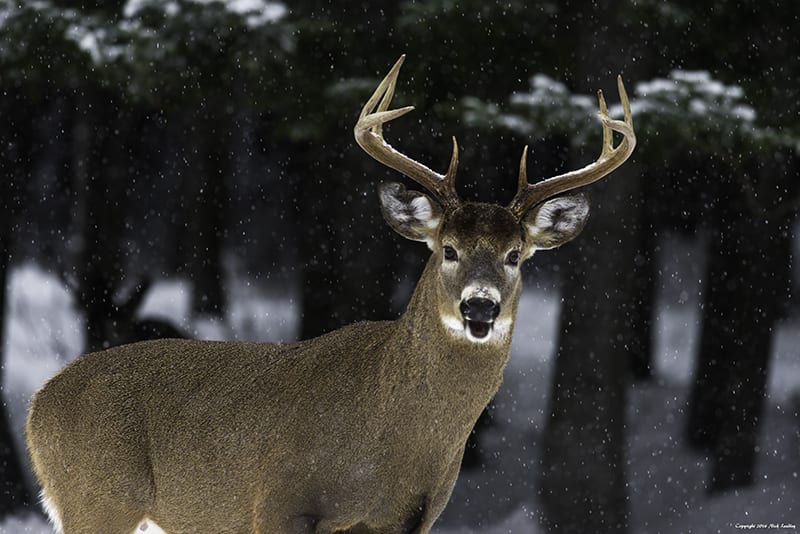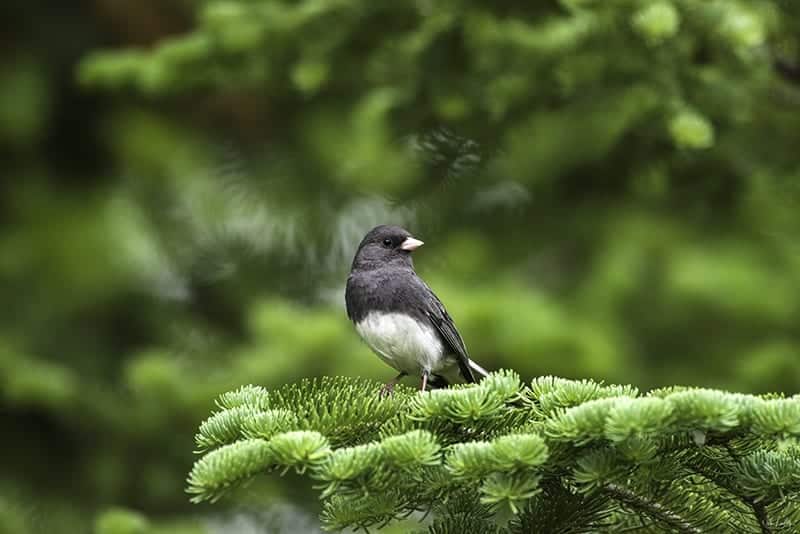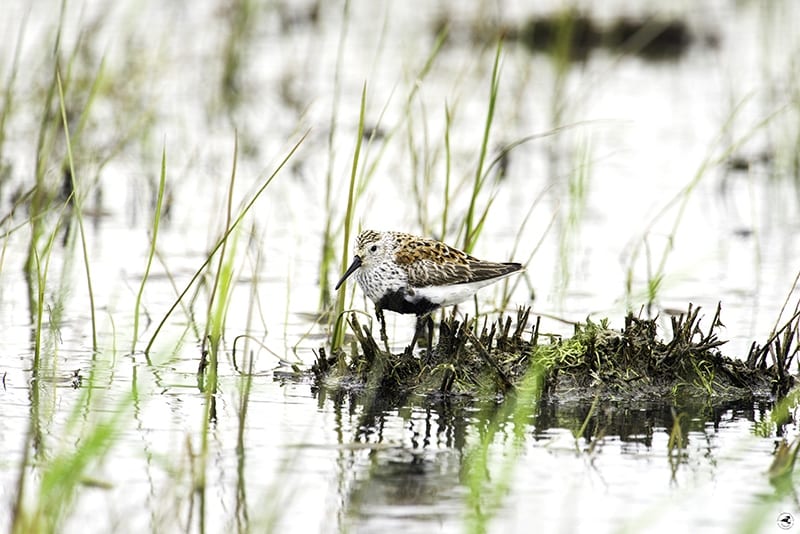
Welcome back to Through the Lens with Nick Leadley, our continuing series on wildlife photography. Read the rest of the series here, and see more of his work at Touch The Wild.
Cloudy days never get me down. Actually, I look forward to them.
Building on the last blog post for Maine Audubon, I’m going to touch on one of my favorite types of light. In a photographer’s terms, that is “soft light.”
Light is described based on its contrast level. The sun is a very harsh and directional light source, particularly in the hours following sunrise and leading up to sunset.
There is nothing wrong with directional light sources. They create dramatic lighting with deep shadows and bright highlights.
Soft light is nearly the exact opposite of directional lighting. It seems to come from everywhere. Anyone who has been to a portrait studio has seen man-made soft light in action. Umbrellas and softboxes turn a directional light source into a non-directional light source.

In the field, clouds turn the intense illumination of the sun into a large, diffused source that wraps our subjects in a softer, pleasing light. The contrast between highlights and shadows is reduced considerably.
Individual clouds on a sunny day can help to create soft light. In my opinion, high, thin layers of clouds, those found on a slightly overcast day, resulting in the best-diffused light. To determine the quality of the light, I will hold my hand up with one side pointed towards the light source, the other pointed away, and take note of the difference between the bright side and the opposite side.
When photographing wildlife, shooting on days with soft light can allow you to shoot all day if the lighting conditions hold. This applies to lighter colored and white birds, but also larger mammals. Soft light is also useful when creating scenic photographs with a relaxing feel to them. Often soft light is a favorite of portrait photographers due to its subtle qualities.
Aside from clouds, there is little way to create soft light when shooting wildlife. You can find subjects located on the north side of trees or in shaded areas with light reflected in them.
If photographing subjects that you can control, such as macro work, there are ways to create soft light. Using your own shadow is one. Or you can produce softer light using a diffuser, either manufactured ones or those you make yourself. This can be done using old white bedsheets, a pillowcase, tissue paper, or a white translucent shower curtain.

Here are a few videos on how to make homemade diffusers for use in the field and the quality of soft light, and here is link to inexpensive diffuser material. One of the videos relates to creating soft light for video work, but it covers the subject very well.
- DIY Ways to Diffuse Light
- Diffusion Basics: 3 Cheap Ways To Diffuse Light | Cinematography Techniques
The next time the clouds roll in, don’t leave the camera in the bag. Put on a lens and go discover the beauty of soft light. Or create your own.
If you have any questions, please feel free to contact me through my website at www.touchthewildphotos.com.
